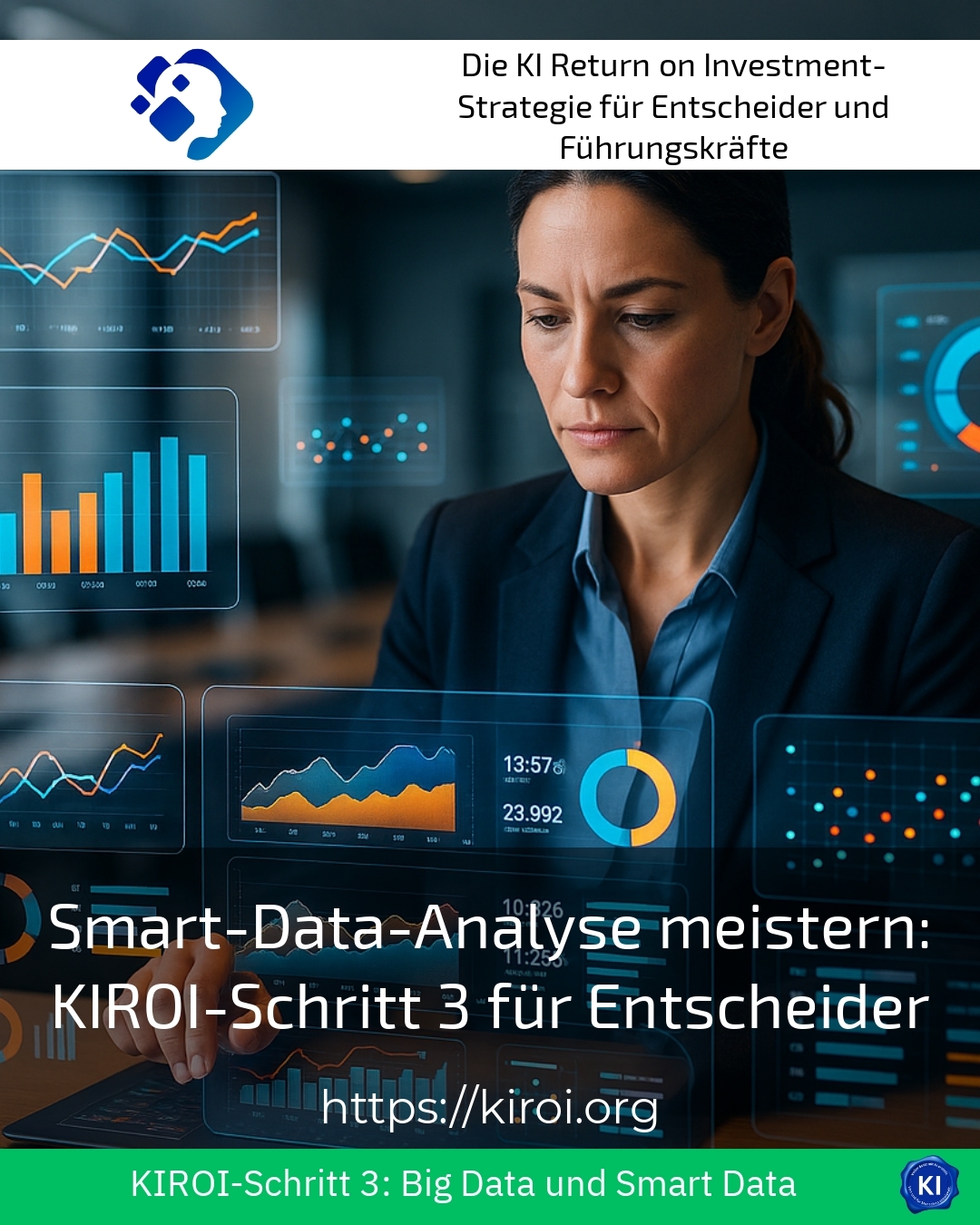Why analysing smart data is crucial today
Many decision-makers report that they are faced with a flood of data that at first glance appears to be of little use. However, this is precisely where the smart data analysis approach comes in - namely not only collecting large amounts of data, but also filtering and enriching it in a targeted manner. Smart data analysis is not a magical lever, but a method that supports managers in companies and helps them to make more informed data-based decisions. Clients often report that this method gives them better insights and allows them to focus on relevant information.
Smart data analysis: from data volume to decision quality
The path from a huge flood of data to valuable smart data is a challenge that many companies are familiar with. It is about recognising valuable signals from many data points in order to draw clear and viable conclusions. Intelligent filtering and algorithms ultimately turn big data into smart data. This strengthens the basis for decision-making without overburdening employees with irrelevant information.
An example from industry shows how smart data analysis is used in manufacturing and production: Sensors collect huge amounts of machine data, but only targeted analysis makes it possible to recognise maintenance requirements at an early stage and significantly reduce downtime. In the financial sector, smart data analysis helps to recognise transaction patterns that could indicate attempted fraud. In retail, on the other hand, companies benefit from analysing purchasing behaviour more precisely in order to tailor offers and manage stock levels more efficiently.
The practice: How KIROI supports smart data analysis
The support of experienced coaching such as KIROI helps decision-makers to better manage the complexity of smart data analysis. It's not about understanding all the data yourself, but about providing the right impetus for utilising this data and implementing projects in a targeted manner. Questions often arise such as: How do I filter relevant information? Or: How do I structure the data analysis so that it remains tangible in everyday life?
KIROI BEST PRACTICE at company XYZ (name changed due to NDA contract) The company was faced with the challenge of gaining valuable insights for marketing campaigns from large amounts of customer data. Targeted smart data analysis enabled the campaign strategy to be adjusted in such a way that wastage was reduced and the customer approach was significantly more precise. This led to a measurable increase in customer satisfaction and optimised marketing expenditure.
Another example can be found in the healthcare sector. Here, managers use smart data analyses to better manage patient flows and predict bottlenecks. Supporting the implementation of the data strategy helps to consistently observe data protection and create efficiencies at the same time. In the logistics sector, decision-makers use smart data to recognise real-time trends in the supply chain, for example, which allows them to react quickly to disruptions.
Common challenges and how support can help
Many managers report that there is often a lack of suitable methods to make the flood of data manageable. Data quality, suitable software and the development of skills are key aspects here. Support from experienced coaches such as KIROI offers valuable assistance here. They provide impulses for the right prioritisation and help to find pragmatic and comprehensible solutions that fit the respective company situation.
The automotive industry, for example, often faces complex challenges when integrating smart data into development processes. With professional support, new approaches can be introduced gradually without overburdening day-to-day operations. In the energy and utilities sector, smart data analysis helps to better understand consumption patterns and thus make control more efficient.
My analysis
Smart data analysis supports decision-makers in extracting truly relevant information for strategic and operational decisions from the large volume of data. The guidance and support provided by experienced partners such as KIROI is a valuable building block for making the best possible use of the data's potential. Decision-makers should not expect quick miracles, but rather a long-term companion who provides impetus, maintains an overview and points out practical implementation paths.
Further links from the text above:
[1] Sanjay Sauldie | KIROI Step 3: Big data and smart data
[4] Mastering data analysis: KIROI step 3 to Big & Smart Data
[7] Big Data vs. Smart Data: Valuable Insights to Optimise Operations
For more information and if you have any questions, please contact Contact us on the topic or read more blog posts on the topic Artificial Intelligence Blog here.















